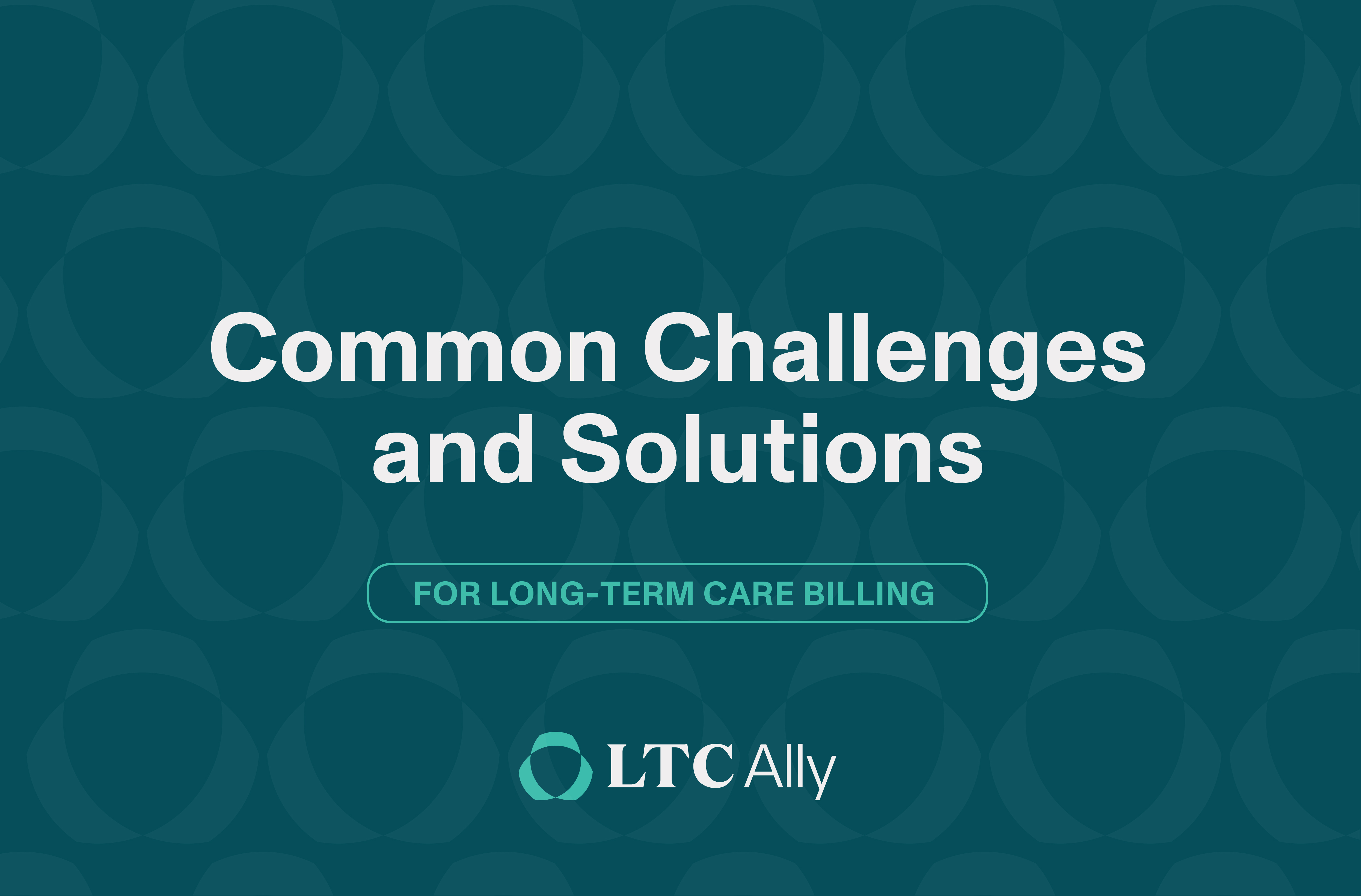In the world of long-term care, the mission is clear: deliver exceptional care to residents. However, long-term care billing challenges can create significant obstacles. Ensuring financial stability is a constant challenge for long-term care facilities.
Table of Contents
This post explores the common challenges in long-term care billing and collections and approaches to streamlining processes, enhancing revenue collection, and ultimately supporting the goal of delivering outstanding care.
Long-Term Care Billing Challenges in Healthcare
- Navigating Complex Reimbursement Systems
Medicare, Medicaid, and private insurers each have distinct rules and constantly evolving guidelines, making billing a complicated process. This creates a high risk of errors or denials due to misinterpretation or lack of updates. Facilities often struggle with balancing the demand for accurate billing while keeping up with these continuous changes, which can lead to significant operational disruption. - Inefficient Billing Workflows
Manual billing workflows are prone to errors and inefficiencies, causing delays in processing and payment. The lack of streamlined systems can result in duplicate tasks or missed steps, leading to revenue leakage. Staff burnout and mismanagement become familiar as they handle redundant or overly complex processes. - Managing Private Pay Accounts
Private pay accounts pose unique challenges as they often result in delayed payments or disputes over billing. Families may lack clarity on charges or struggle with affordability, further complicating the collection process. These delays can cause cash flow inconsistencies, leaving the facility financially vulnerable. - Keeping Up with Regulatory Changes
Frequent changes in healthcare regulations demand continuous monitoring and adaptation. Failure to comply can result in penalties, audits, or even loss of reimbursements. This constant need to stay informed puts additional pressure on administrative staff, diverting their focus from other critical tasks. - Lack of Financial Reporting and Insights
Inadequate financial reporting systems make it difficult for facilities to track performance or predict revenue trends. This lack of visibility leads to poor decision-making and inefficient resource allocation. Without clear insights, facilities may face financial instability and fail to identify areas requiring immediate attention.
Why These Challenges Matter
Long-term care facilities operate in a delicate balance of delivering exceptional care while maintaining financial stability. The challenges in billing and collections can disrupt this balance, leading to significant operational and financial strain. When billing errors or inefficiencies occur, they delay revenue and drain staff resources, diverting attention from core patient care activities. Frequent claim denials, cash flow issues, and compliance risks can erode trust with residents and families, impacting the facility’s reputation. By addressing these obstacles, facilities can create a more stable financial foundation, ensuring that they can prioritize their primary mission—providing compassionate, high-quality care.
Practical Solutions for Common Challenges
Successfully navigating the complexities of long-term care billing and collections doesn’t have to mean doing it all in-house. Partnering with a specialized back-office billing provider, like LTC Ally, offers facilities the tools and expertise they need to address challenges effectively.
Here’s how facilities can address common billing obstacles effectively:
1. Streamlining Workflows with Automation
Manual billing processes often result in redundancies and errors that delay revenue cycles. Implementing automation tools tailored to the unique needs of long-term care can prevent these inefficiencies, improving both accuracy and speed. By leveraging advanced tools through a partner like LTC Ally, facilities can focus on delivering quality care instead of navigating outdated workflows.
2. Reducing Denials Through Proactive Auditing
Pre-billing audits are critical for catching errors before claims are submitted, but conducting them effectively in-house requires significant attention to detail and expertise. By incorporating proactive auditing into workflows, facilities can reduce denials and ensure timely payments. A systematic approach, ensures that claims are reviewed for accuracy before submission, minimizing revenue delays.
3. Simplified Private Pay Management
Private pay accounts can present challenges such as delayed payments and billing disputes. Streamlining communication with families, offering flexible payment options, and setting up automated reminders can help minimize confusion and improve cash flow. Specialized tools, often provided by experienced billing partners, make it easier to manage these accounts seamlessly.
4. Leveraging Advanced Analytics
Tracking denial trends, monitoring key performance indicators (KPIs), and uncovering inefficiencies requires robust analytics. Facilities that use advanced analytics gain actionable insights to make smarter, faster decisions. With the support of analytics tools, like those provided by LTC Ally, facilities can identify patterns, resolve inefficiencies, and optimize their financial performance proactively.
5. Comprehensive Revenue Cycle Management
Managing the revenue cycle from start to finish involves everything from claims submission to collections. This process requires precision, compliance, and coordination across teams. A trusted partner like LTC Ally can assist in managing this process seamlessly. Their expertise allows facilities to maintain focus on their core mission: providing high-quality care to residents.
Building a Strong Foundation for Success
Long-term care billing challenges don’t have to overwhelm your facility. With the right external support, you can gain the expertise, tools, and processes needed to overcome obstacles, improve cash flow, and create a more efficient operation—all while prioritizing resident care.
Every improvement in billing processes translates to more time, energy, and resources for enhancing the quality of life for residents. Long-term care facilities can confidently navigate these complex billing challenges by partnering with a professional serv
